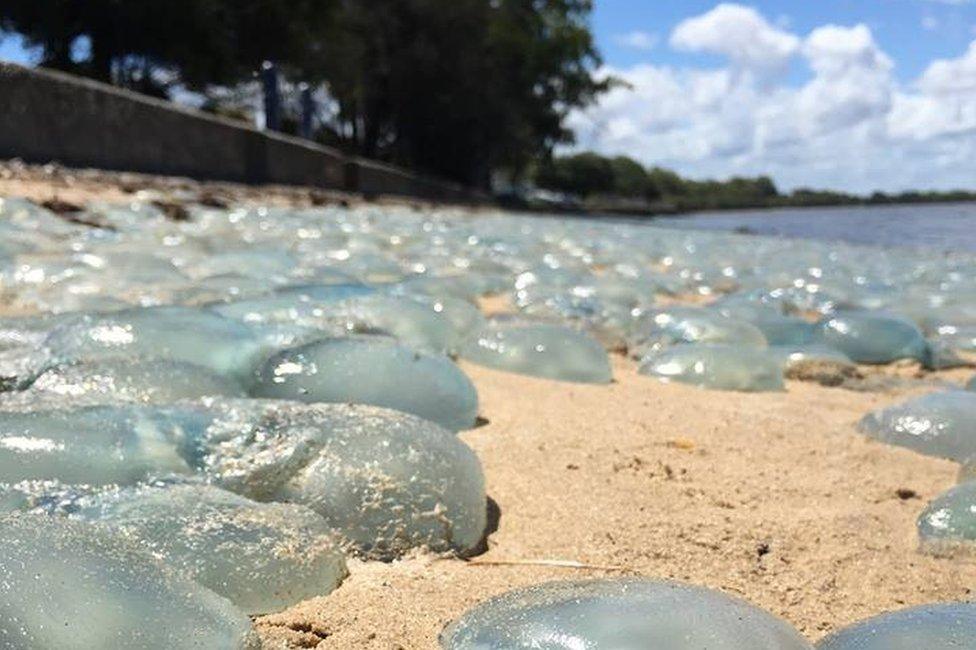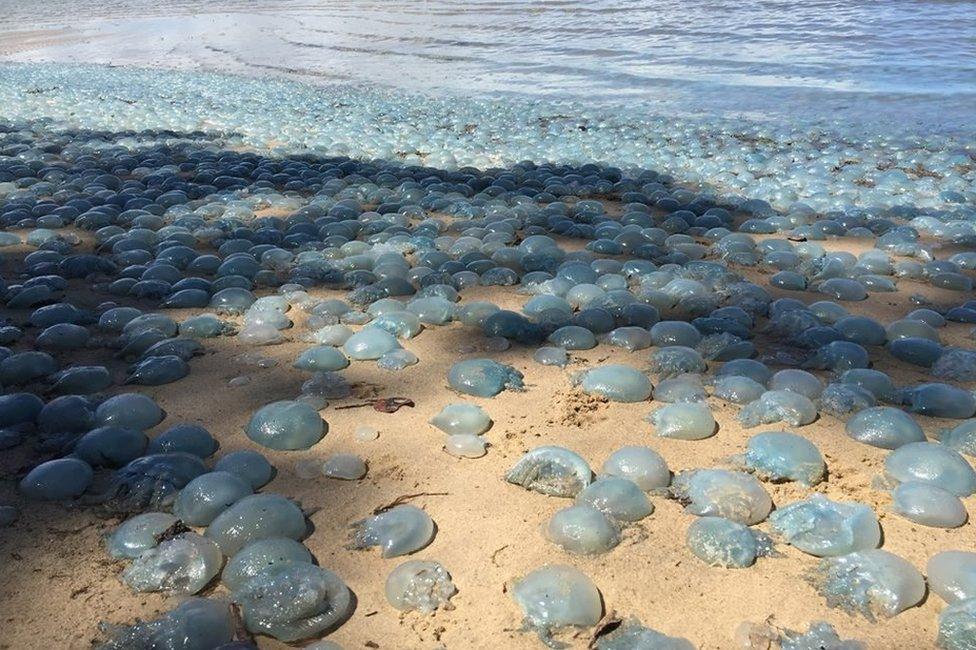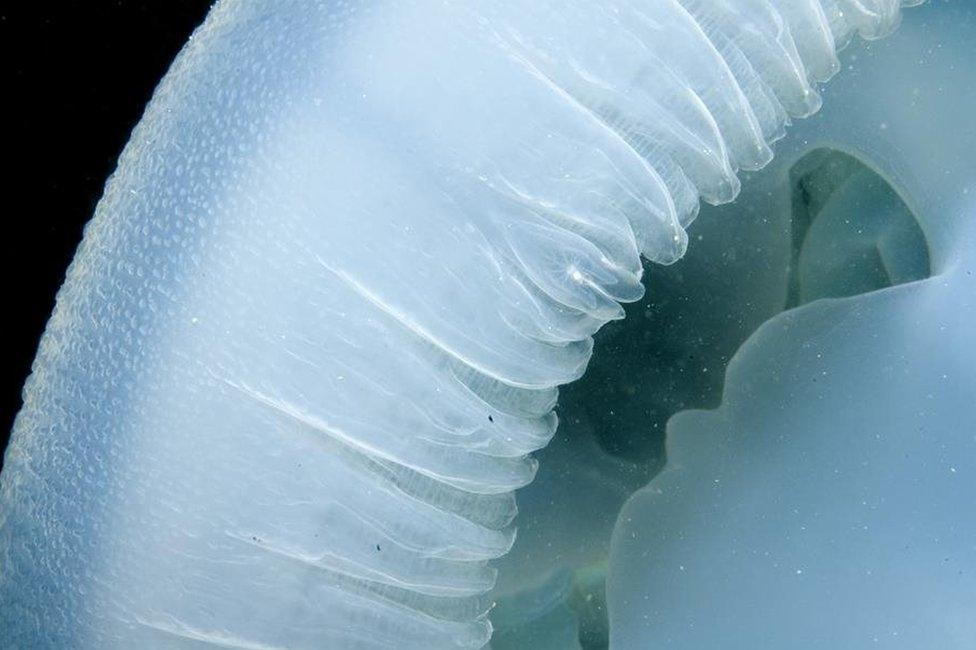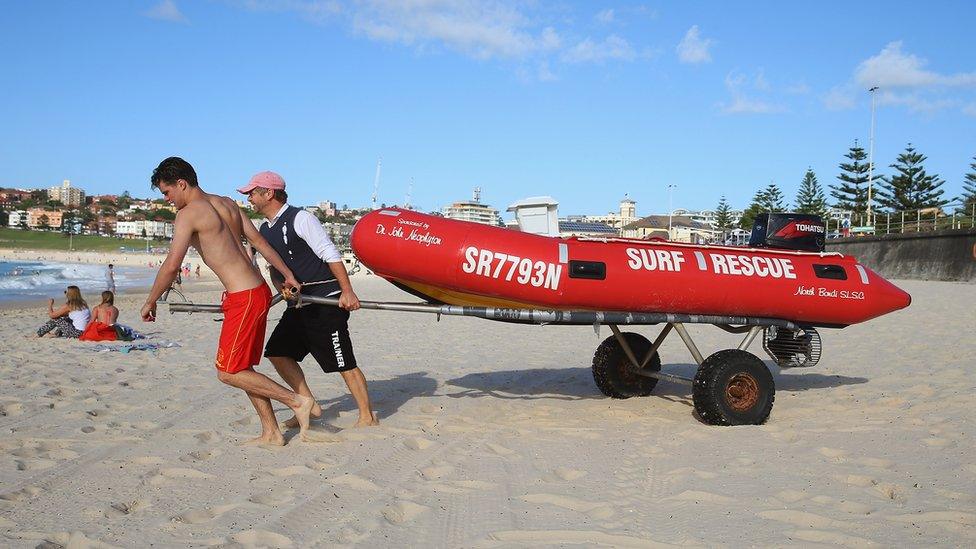Jellyfish wash up 'like wallpaper' on Australian beach
- Published

Jellyfish cover the beach at Deception Bay in Queensland
Thousands of blue blubber jellyfish have washed up at an Australian beach, surprising locals and marine experts.
Charlotte Lawson, 24, took photos of the jellyfish at Queensland's Deception Bay after noticing an unusual colour in the water.
"[When] we got closer we realised it was jellyfish," she told the BBC. "It was like bubble wrap across the beach."
Although a common sight on Australia's east coast, the mildly venomous marine stinger is rarely seen in such numbers.

You might also like:

Marine biologist Lisa-Ann Gershwin said she gasped when she saw the pictures.
"It's like wallpaper," she said. "They are just cheek by jowl. They are packed so tightly. It's a sea of blue."
Dr Gershwin said the phenomenon was probably caused by a combination of factors including warmer waters, abundant nutrients and an absence of predators.

The density of the stranding has surprised experts
Northerly winds and tide conditions may have also contributed, she said.
Ms Lawson said she had never seen so many jellyfish. They had started to smell "pretty rank", attracting complaints from locals, she said.
Dr Gershwin said she expected the jellyfish to dry out on the sand and be eaten by birds.
Others species washing up
The Sunshine Coast Daily, external reported that recent strong north-easterly winds had contributed to a spike in jellyfish sightings.
According to Surf Life Saving Queensland, more than 22,800 swimmers were treated for stings by another jellyfish species, the bluebottle, on the Sunshine Coast from 1 December to 31 January.
Dr Dan Capps said he treated three dogs for stings at his Sunshine Coast veterinary clinic at the weekend.

The blue blubber, or catostylus mosaicus, is a common sight in south-east Queensland
"We've had a prevalence of bluebottle jellyfish and other fire-type stingers on the Sunshine Coast," Dr Capps told the BBC.
"Some dogs have been eating them and its a very painful experience for them."
Reporting by the BBC's Greg Dunlop
- Published1 February 2017

- Published4 January 2017
